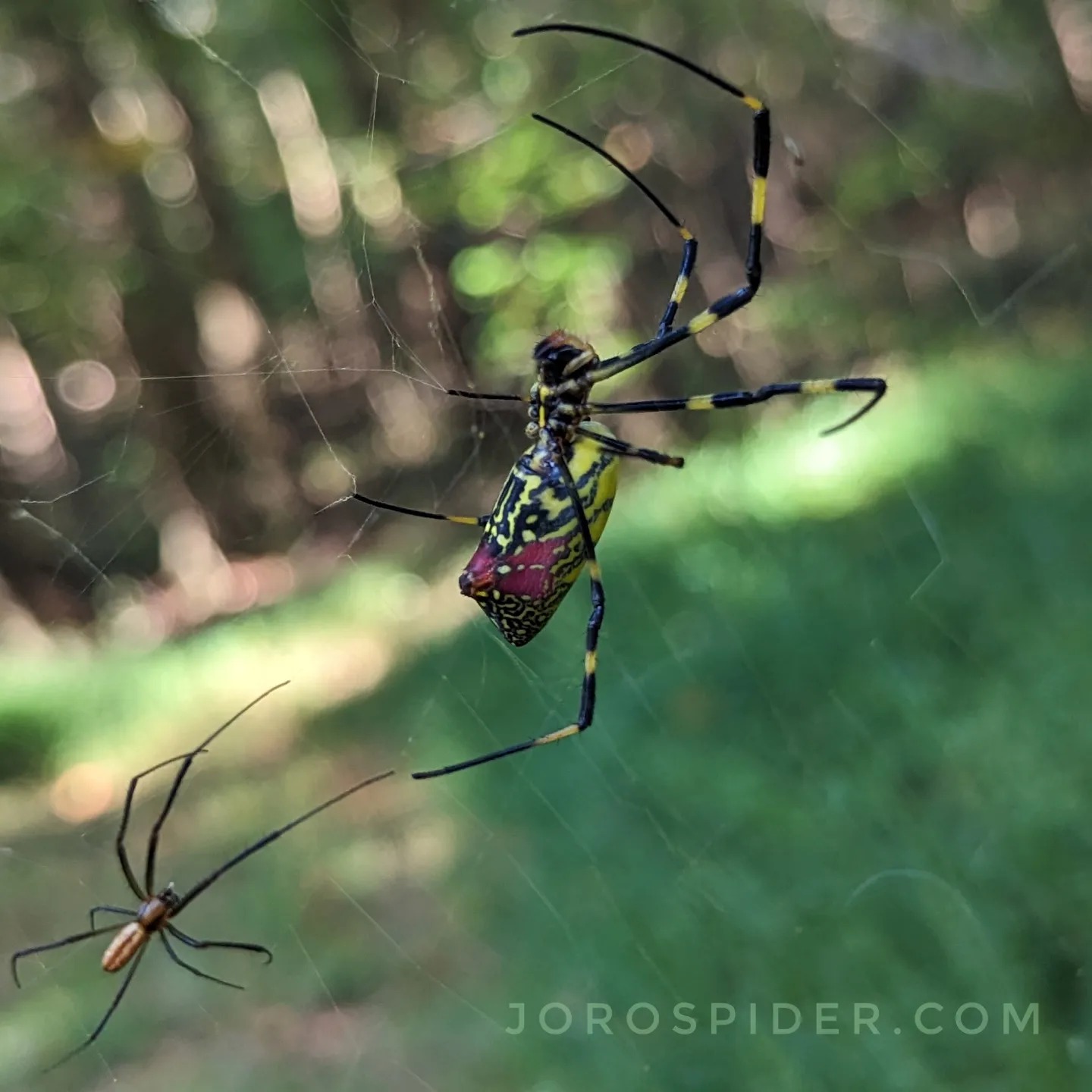What is a Spider?
Why are they so cool?
We love all spiders, though, as you might’ve noticed, we are partial to the Joro. What makes a spider a spider?
Spiders are fascinating creatures that belong to the class Arachnida, a diverse group of joint-legged invertebrates. These arthropods are characterized by their unique physical attributes and complex behaviors, making them a subject of curiosity and interest for scientists, nature enthusiasts, and even the casual observer. In this essay, we will explore the anatomy, behavior, and significance of spiders in the natural world.
Anatomy of a Spider
Spiders possess distinctive features that set them apart from other arthropods and creatures. These characteristics include:
Eight Legs: Perhaps the most recognizable feature of spiders is their eight legs. This sets them apart from insects, which typically have six legs. These multiple legs allow spiders to move with remarkable agility and precision.
Cephalothorax and Abdomen: The spider’s body is divided into two main parts, the cephalothorax and the abdomen. The cephalothorax, found at the front, houses the spider’s mouthparts, eyes, and legs. The abdomen, situated at the rear, contains the spider’s digestive organs and silk-producing glands.
Spinnerets: Spiders have specialized structures called spinnerets located at the rear of their abdomen. These tiny organs produce silk, a remarkable substance that spiders use for various purposes, such as building intricate webs, creating egg sacs, and capturing prey.
Venomous Fangs: Many spider species have venomous fangs known as chelicerae. These fangs allow spiders to inject venom into their prey, aiding in immobilization or digestion. The potency of spider venom varies greatly among species.
Multiple Eyes: Spiders typically have multiple eyes, often arranged in distinct patterns on their cephalothorax. The number and arrangement of eyes can differ among different spider species, with some having excellent vision and others relying more on other sensory mechanisms.
Behavior and Ecology
Spiders exhibit a wide range of behaviors and lifestyles. Some of the most common behaviors and characteristics include:
Silk Production: Spiders are renowned for their silk-producing abilities. They use silk for constructing intricate webs to capture prey, creating protective egg sacs, building retreats, and even for dispersal through a process known as ballooning.
Predatory Nature: Most spiders are carnivorous predators, preying on a variety of insects and other small arthropods. They use their silk and venom to catch, immobilize, and digest their prey.
Diverse Hunting Strategies: Different species of spiders employ various hunting techniques, including orb-weaving, stalking, burrowing, and ambushing. Some, like the orb-weavers, construct intricate, circular webs to ensnare flying insects, while others, like wolf spiders, actively hunt on the ground.
Reproductive Strategies: Spiders reproduce by laying eggs, and their reproductive strategies vary widely. After hatching, spiderlings often undergo a series of molts as they grow into adulthood.
Significance in Nature
Spiders play crucial roles in ecosystems and have several ecological and environmental significance:
Pest Control: Spiders are natural pest controllers, as they help regulate insect populations. By preying on insects, they contribute to maintaining ecological balance and reducing the need for chemical pesticides.
Food Source: Spiders serve as a vital food source for various predators, including birds, reptiles, amphibians, and other arachnids. Their presence in food chains and webs of life is integral.
Silk Production: The silk produced by spiders has inspired human innovation, leading to applications in areas like textiles, medical sutures, and even high-strength materials.
Spiders are remarkable creatures with unique features and behaviors that make them both intriguing and valuable in the natural world. They are exemplars of adaptation and diversity, showcasing the wonders of nature. By understanding and appreciating these remarkable arachnids, we gain a deeper insight into the intricate web of life that surrounds us.
“Spiders are remarkable creatures.”


The Stuff of Nightmares or Gardens?
Maybe both. As you learn more, the nightmares will disappear.
See our sponsors: American Speechwriter and Tree Fort Books
© Copyright 2024 All Rights Reserved. JoroSpider.com
This site may contain affiliate links so I earn a commission.
Read: The Raging Giant Blue Goldfish - 22 Short Stories

